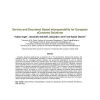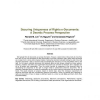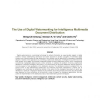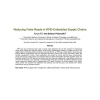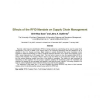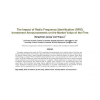JTAER
2008
13 years 11 months ago
2008
Innovative eCustoms solutions play an important role in the pan-European eGovernment strategy. The underlying premise is interoperability postulating a common understanding of pro...
JTAER
2008
14 years 7 days ago
2008
The integration of supply chains as a mechanism for value creation is largely dependent on continuous flow of real time accurate information from the customer back upstream to the...
JTAER
2008
14 years 21 days ago
2008
e-Government can be defined as Internet applications for public administration processes and decision making on local, regional, national as well as cross-national level. Therefor...
JTAER
2008
14 years 21 days ago
2008
We typically think of documents as carrying information. However, certain kinds of documents do more than that: they are not only informative but also performative in that they re...
JTAER
2008
14 years 21 days ago
2008
Digital watermarking is a promising technology to embed information as unperceivable signals in digital contents. Various watermarking techniques have been proposed to protect cop...
JTAER
2008
14 years 21 days ago
2008
The adoption of advanced integration technologies that enable private and public organizations to seamlessly execute their business transactions electronically is still relatively...
JTAER
2008
14 years 21 days ago
2008
RFID tags are increasingly being used in supply chain applications due to their potential in engendering supply chain visibility and reducing tracking errors through instantaneous...
JTAER
2008
14 years 21 days ago
2008
Recently, radio frequency identification (RFID) is being explored as a technology to be used in supply chain management. The use of RFID in the supply chain is an emerging technol...
JTAER
2008
14 years 21 days ago
2008
This paper examines the impact of RFID investment announcements on the market value of the firms and explores industry effects of the positive abnormal returns to firms making the...
JTAER
2008
14 years 21 days ago
2008
The first part of the paper discusses Wal-Mart's adoption of RFID through the theoretical lens of the Resources, Processes, and Values (RPV) innovation theory. This part make...
